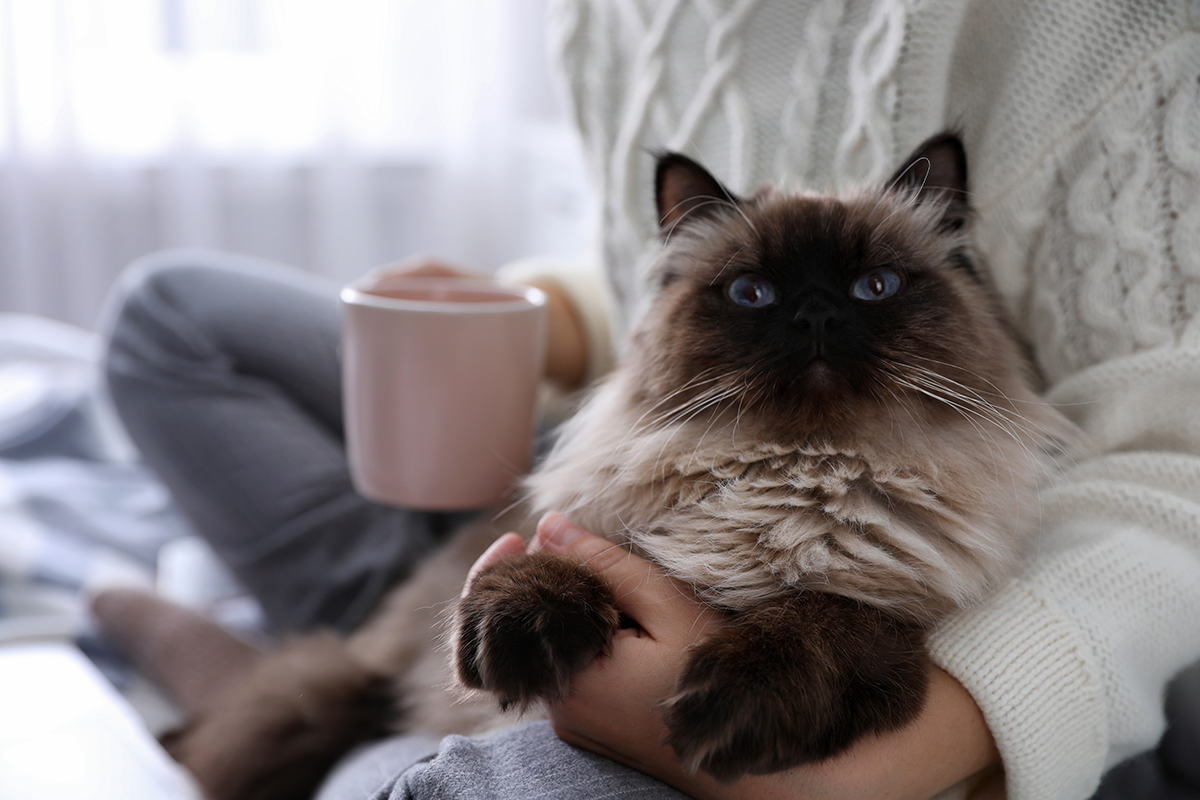 Animal Chatter
Animal Chatter
By Iris Winston
Can a cat have a happy life if he never roams the great outdoors?
Cats instinctively love exploring, hunting and staking out their territory. Wild, feral and some male farm cats can cover 150 acres or more, for example. Even the more modest 15 acres that make up the average female farm cat’s territory is a far cry from the amount of space available in an urban mansion, never mind the average house or apartment.
Yet, most humane societies and rescue organizations offering cats for adoption recommend (sometimes even demand) that their cats should live the rest of their lives indoors after being adopted. And people living in high-rise apartments in dense, urban settings have little choice but to keep a cat inside.
Unquestionably, it is easier to keep an indoor cat safe — though some dangers, such as hot appliances or high balconies, still exist. The main hazards for cats allowed to wander freely outside are traffic, greater exposure to disease, other animals and extreme temperatures. Meanwhile, the biggest threats to the serenity of the indoor cat are boredom and loneliness. So, although the indoor cat has better protection from outdoor dangers, he is at greater risk of psychological harm.
This is particularly true if the cat once knew the joys of a life with access to natural outdoor surroundings, as well as indoor comforts. For instance, my Norwegian Forest cat entered my life when she was around two years old. She had been hanging around a friend’s house for some time, apparently lost. After the said friend checked around the neighbourhood with no success, we advertised in the media, at vet clinics, and local shelters to try to find the owner. All to no avail, so my friend brought the cat to me.
The plan was that I would take her to my local animal shelter (a no-kill facility where she would be safe until she had a new home). That plan went out of the window as soon as I saw her. She started purring immediately, used the litter box I had made available, then ate the breakfast waiting for her at the other side of the room, followed by extensive grooming. Clearly, she was demonstrating that she was the perfect cat. And so, it has proved. Freya has been a valued member of our household for almost 11 years now and is the most personable of the seven cats I have owned throughout my lifetime.
I have never attempted to turn her into an indoor cat. In the first place, most information about Norwegian Forest cats (also known as Viking cats) says that this hardy, highly intelligent breed needs to roam outside, in rough bush if possible. I am also convinced that Freya had escaped from indoor confinement —possibly when being cared for in a strange place while her owner was away — and became disoriented. She has made it clear that she prefers spending some time outside in almost any weather. Now identified by microchip, she enjoys having the freedom to wander and to come home (often after following my dog and me as we walk in a nearby park) on her schedule.
It has worked well for us for 11 years — although she did take two trips back to our former home after we moved house three years ago — giving me two weeks of worry before she was returned to base (with the help of old and new neighbours).
Freya’s determination to go back to our old house convinced me that she had tried a similar action just before she came to us. It also made me certain that she would be unhappy if forced to stay inside all the time.
A different breed, such as the compliant, docile Ragdoll, would be more likely to adapt to an indoor life. Many kittens who have never been exposed to the joys of life the other side of the door will settle into an indoor routine. They may even adapt to being walked on a leash. The degree of success here depends on the cat’s personality.
In general, a happy life for indoor cats depends on giving them plenty of entertainment, exercise and company. Toys, a pot of cat grass to chew, scratch pads, climbing trees, views of the outside and the companionship of another cat help to make life stimulating. Cats who are bored or stressed may overeat, become aggressive or be sloppy about using their litter boxes, even if the owner is meticulous about cleaning and changing the litter frequently.
Some people (usually thinking of protecting their furniture from cat scratches) reason that as their cat is staying indoors, he should be declawed. Don’t do it. Simply put, declawing (which is the equivalent of cutting off the first joint of human fingers) causes unnecessary pain, maims the animal and make him less able to groom himself, climb effectively (even onto a chair) or keep his litter box tidy. And if the indoor cat ever escapes, he cannot defend himself properly.
Declawing should never be part of the equation when adopting a cat. The commitment we make is to provide a loving, forever home and an environment— indoor or with access to the outside — that brings the pet joy and comfort.
Almonte, Ontario writer, Iris Winston, is a former Executive Director of the Canadian Federation of Humane Societies. She has been an animal lover all her life. Her pets have always been important members of her family






